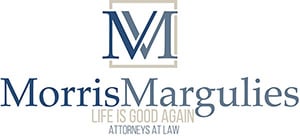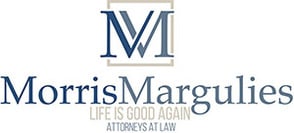
This articles discusses what debtors can expect at the meeting of creditors. First, the court will set the date, time and location for the Section 341 Meeting of Creditors after the debtor’s bankruptcy case is filed. It will be scheduled to occur at least 21 days after filing but no later than 40 days after the filing of the bankruptcy case. The debtor and his or her attorney must attend the hearing. Failure to attend is grounds to have the case dismissed.
The debtor will receive notice of the time, date and location of the meeting of creditors by mail within a week of the filing of the bankruptcy case. If for some reason the debtor or his attorney has a conflict, such as a vacation or a medical procedure scheduled for that date and time, immediately notify the Chapter 7 trustee and ask for a continuance.
For cases filed in the Greenbelt Division, the meeting of creditors occurs in a room on the 6th floor of an office building in Greenbelt, Maryland. For cases filed in the Baltimore Division, the meeting occurs in a room on the 2nd floor of the U.S. Courthouse in Baltimore. For cases filed in the District of Columbia, the meeting occurs in a room on the 1st floor of the U.S. Courthouse in the District of Columbia. The meetings are open to the public, but only those scheduled for hearings are likely to be there.
The people that will be present are the debtors, their attorneys, the Chapter 7 trustee, who will be conducting the hearing, and on rare occasions, creditors. The bankruptcy judge assigned to the case does not appear at the meeting of creditors. Creditors are not required to attend, but may choose to do so in order to ask the debtor questions about their assets and liabilities. For example, if the creditor thought it had a security interest in an item owned by the debtor, but that item was not listed as an asset on the debtor’s schedules, the creditor will want to know what happened to this asset.
The Trustee is required to verify the debtor’s identification and social security number. The debtor can verify his or her identification and social security number by showing a government issued ID, such as a driver’s license, passport, or medicare card with his picture on it. A debtor can provide proof of his or her social security number by providing a document issued by a third party that shows the full social security number, such as a social security card, a W-2 form, a 1099 form, a military ID form, or a medicare ID form, as long as these items contain the full social security number. The debtor’s own tax returns will not satisfy this requirement. If these documents are not provided, the trustee will not be able to conduct the meeting and it will need to be rescheduled to another date.
The law requires that before the meeting of creditors occurs, the debtor send the trustee copies of his or her most recent tax return he or she filed and a copy of his or her payment advices, such as pay check stubs, received by the debtor for the 60-day period before the date of filing. Most trustees, including myself, also require that the debtor send the trustee copies of his or her bank statements showing what was in the debtor’s bank account(s) on the date of filing. If for some reason the debtor did not send these documents before the meeting of creditors, he or she should bring them to the meeting of creditors. If the trustee has time, he or she may be able to look at them right then. However, if there is no time to do so, the debtor’s hearing may be continued to a later date.
The trustee’s primary job is to review the debtor’s bankruptcy paperwork to determine whether he or she has any nonexempt assets that can be sold to pay the debtor’s creditors. The trustee also makes sure that all the paperwork filed by the debtor is correct and accurate. The trustee will also investigate the case for fraud and/or abuse.
The trustee will ask the debtor a series of questions. All debtors are required to answer the trustee’s questions truthfully, as they will be testifying under penalty of perjury. It is considered a federal crime to testify falsely at the meeting of creditors.
If the trustee determines there are no assets to administer, he or she will file a “no distribution report” with the court. If on the other hand, the trustee determines that there are assets to administer, the trustee will discuss with the debtor and his or her attorney the turnover of those assets to the estate. Until those assets are fully administered, the case will not be closed, although the debtor may receive the discharge order before then.
It is important for the debtor to prepare for the meeting of creditors with his or her attorney. The attorney will be able to let the debtor know exactly what questions will be asked and what documents need to be given to the trustee.
Laura Margulies is the principal at Laura Margulies & Associates and can be reached at [email protected].

